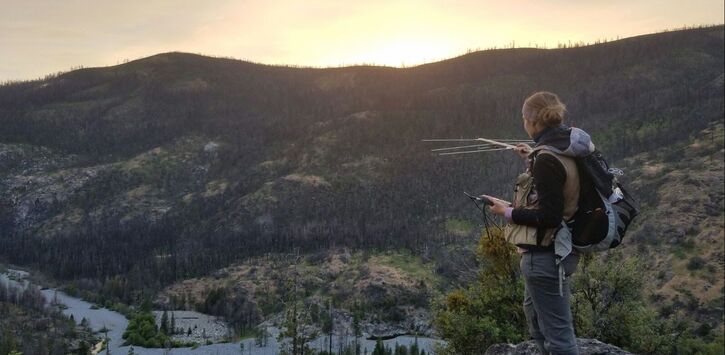Research
Members of the Lewison Conservation Ecology Lab work on a variety of taxa using a wide range of methodologies. What unites the lab is a dedication to understanding the impacts of human interaction and disturbance on vertebrates of conservation concern. Below are some of our general research interests and links to projects in the lab.
|
Climate-ready and sustainable fisheries
In the past 50 years, total world fisheries production has increased steadily from 19.3 million tons in 1950 to more than 154 million tons today. Given the billions who rely on ocean resources to survive, sustainable fisheries are more important than ever. Our research focuses on how to improve sustainability of fisheries and reduce the impact of incidental capture of non-target species, termed bycatch. Bycatch species can be species of conservation concern (e.g. marine mammals, sea turtles, seabirds) or commercially viable non-target species, e.g. sharks. Characterizing and quantifying bycatch and bycatch limits presents a formidable challenge and is the focus of a number of research projects in the Lewison lab. Projected climate changes may also pose a substantial risk to sustainable fisheries. Working directly with fisheries stakeholders, the Lewison Lab is developing applications that track fisheries-relevant physical and biological features of the ocean to support climate-ready and sustainable fisheries.
|
|
Ecotoxicology and ecosystem health
Ecotoxicology is the multidisciplinary study of the effects of toxic chemicals on biological organisms, especially at the population, community, and ecosystem levels. The ultimate goal of this field is to predict the effects of pollution so proactive approaches may be taken to prevent or remediate detrimental effects. In ecosystems already impacted by pollution (i.e. San Diego Bay), ecotoxicological studies can inform the best course of action to restore ecosystem services and functions efficiently and effectively. A number of these projects are in collaboration with Dr. Eunha Hoh in the Graduate School of Public Health to address toxicological impacts to vulnerable vertebrates. |
|
Landscape/seascape connectivity
Understanding how fragmented populations are connected is important for effective management and conservation. Connectivity can refer to either the movement of individuals from one habitat to another or the movement of genes through adjacent populations, commonly referred to as gene flow. Since animal movement and gene flow can be difficult to observe, scientists have developed multiple tools to empirically test for connectivity including both telemetry and genetic analyses. Research in the Lewison lab studies terrestrial and marine connectivity using telemetry (radio, acoustic, and satellite), innovative genetics techniques and landscape-level quantitative analyses. |
|
Coupled human and natural systems
Many systems are characterized as coupled human and natural systems, often referred to as CHANS or social-ecological systems (SES). The CHANS framework has a large part of its intellectual origin in complexity science. Despite many different contexts and settings of CHANS systems, they have been found to share common complex phenomena, like feedback loops, nonlinearity, and complex thresholds and time lags. A number of projects in the lab adopt a CHANS approach to explore the complex relationships between socio-economic, cultural or human demography and ecological factors. |
|
Habitat utilization
Characterizing the spatial and temporal utilization of habitat by organisms is fundamental aspect of conservation ecology. By studying habitat utilization researchers are able to gain insights into resource use and requirements, behavior, inter and intra-speciific interactions, protected area design, and numerous other factors that are necessary to designing effective wildlife management and conservation strategies. Species’ habitat utilization can be studied via direct observations and remote sensing technologies (e.g. satellite telemetry), which can then be combined with data on environmental factors to describe and predict habitat use patterns. |
|
Trophic ecology
Trophic ecology refers to the feeding relationships of an organism within an ecosystem. Determining the trophic dynamics and interactions of organisms generates an overall understanding of an organism's role in ecosystem function and nutrient flow processes. Many animals exhibit complex life histories and cryptic behavior which make it difficult to study their trophic interactions. Tools such as stable isotope analysis allow us to investigate the trophic ecology of many animals in order to understand their habitat use, role in mediating nutrient flow, trophic status, critical habitat and migratory habits all of which contribute to developing more effective management and conservation efforts.
|











